#Asia Unique Forest
Text
Festive Break in the Himalayas!
Festive Break in the Himalayas!
#Welcome 2023!
#AtaliGanga & #CampAquaterra #AUniqueSettingintheHimalayas
#Uniquedestination for the upcoming #winterbreak with your #family
#RiverRaftingontheGanges
#FunFilledActivities
#PrivateAccommodation
#YogaSessions
#Reenergize at our #Spa
#ForestHikes along the #GangesRiver
#WallClimbing with our Experts
The 3 acre property #houses twenty two well appointed, comfortable,…

View On WordPress
#Adler Tours#Adler Tours & Safaris#Adler Tours and Safaris#Asia#ATALI GANGA#CAMP AQUATERRA#family Holidays#FOREST HIKE#FUN FILLED#Ganga#Gujarat#Himalaya#India#Rajkot#REENERGIZE#RIVER RAFTING#SPA#Travel#UNIQUE DESTINATION#Yoga
1 note
·
View note
Text
Fossil Novembirb 15: Oasis in the Desert
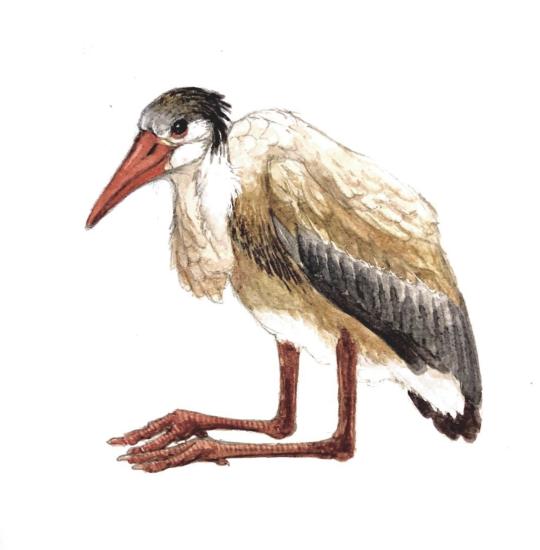
Xenerodiops by @iguanodont
We FINALLY get to an ecosystem that isn't in Europe, North America, Antarctica, or Oceania - it's Jebel Qatrani Time!
(If you are as appalled as I am at the low sampling rates of fossil localities in Asia, South America, and Africa, welcome to the club, and support paleontologists who are from and work in countries from those continents!!!)
The Jebel Qatrani Formation is an ecosystem from Egypt at the end of the Eocene through the early Oligocene. It showcases the tropical forests, swamps, and marshes that existed at this time, emptying into the Tethys Sea. A wet and humid environment, it would have been a weird mixed ecosystem, with both the old and the new coexisting on the riverbanks. And, like in the forests and plains of Oligocene Europe, we see many modern bird groups show up for the first time here - and also very similar to their living relatives! This is a departure from the mammals in the region, which were unique and weird for the time period (though early members of modern groups are found here, too).

Palaeoephippiorhynchus by Bubblesorg
Being a wetland and humid environment, the main feature of the avifauna here are aquatic birds - many of which have close relatives today. Palaeoephippiorhynchus is the oldest known fossil stork, and was remarkably similar to the living Saddle-Billed Stork - even having the same upcurved bill. While it's uncertain if they're close relatives or not, it is possible that living Saddle-Bills are similar to this ancient form. There was also a mid-sized heron, a bird extremely similar to living Black-Crowned Night Herons, and Xenerodiops - a heron with a pointed and strong bill, curved downward - good for grabbing onto prey. It was a very sturdy, robust bird - even for a heron.
In addition, there was Goliathia - the fossil Shoebill! This bird had legs much like the living shoebill, and was similar enough in the limbs that it might be in the same genus! It probably lived very similarly to living shoebills, feeding on fish in the wetlands around it. What its beak would have looked like is uncertain - the closest living relative to the Shoebill is the Hammerkop, which has a very different skull. What their ancestral skull was, or what Goliathia's was, remains a mystery.

Goliathia by Antonio Rares Mihaila
But if you think I'm done with the water birds, you're very wrong - this is just the beginning! There was also an indeterminant cormorant, which had a very hooked and tapered beak; birds similar to living crowned cranes and others like living flufftails; early jacanas like Janipes which was bigger than all living jacanas but still had the large feet for floating on vegetation, showcasing the vegetation in these wetlands was sturdy enough to hold it up; other early jacanas smaller in size as well like Nupharanassa; and of course -
The Flamingos! Well, yes and no. There was an indeterminate crown-flamingo (ie in the group that all living flamingos are in), a bit bigger than a living lesser flamingo. But there was also Palaelodus - one of the "Grebe-Flamingos" or "Swimming-Flamingos", a long-lasting group of birds that first appear in the early Oligocene and lasted until possibly the Pleistocene! They looked superficially similar to living flamingos and were more closely related to them than to grebes, but they did have some similar characteristics to grebes as well - specifically having less of a kink in the neck, shorter lower legs, and flatter limb bones like those in grebes. They also had webbed feet, which would have allowed for diving or swimming. It also had a straight, conical bill, very unlike the bill of living flamingos.
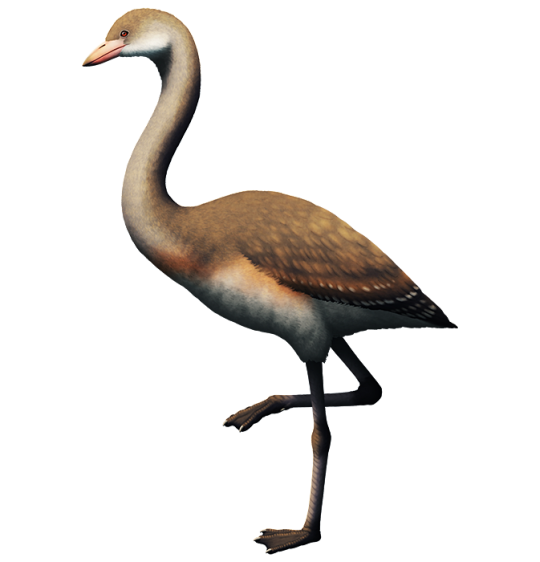
Palaelodus by @alphynix
There were also perching birds, such as an early turaco very similar to the living genus Crinifer; and early eagles, ospreys, and other birds of prey that haven't really been named - mainly because they are very similar to living species, but so distant in time it seems unlikely they'd be in the same genus still... right? One, very similar to the living sea eagle, was found near the shore - indicating a similar ecology to its living relative. Another was almost identical to the living osprey, just smaller in size. And another was similar in size to living ospreys, but more robust than them. This place was filled with raptors!
Of course, I can't ignore the metaphorical elephant in the room. One of the most mysterious birds of the Jebel Qatrani is Eremopezus, a bird that has similarities to so many different groups of birds that its exact position is still a mystery. At this time it is thought to be a Palaeognath, possibly closely related to ostriches or maybe elephant birds - as the volant Lithornithids start to disappear, ratite-like Palaeognaths become more and more common. It was flightless, and probably lived similarly to modern ostriches and other ratites - as a a large herbivore, probably taking advantage of the wetland landscape and the abundance of food.

Eremopezus by @thewoodparable
Jebel Qatrani is such an important formation because it sheds light on the evolution of even more bird groups than those we see in former Laurasia (North America + Eurasia). And it is possible that many lineages we still have in Africa today have been around for thirty million years - and may have been very similar in ecology and appearance during that whole time. Given living birds react to changing climates by shifting with the ecosystems, it's possible that these lines of birds similarly followed the migration of wetlands and other habitats during the climate change to come, persisting to this day across the continent.
Sources:
Kampouridis, P., J. Hartung, F. J. Augustin. 2023. The Eocene-Oligocene Vertebrate Assemblages of the Fayum Depression, Egypt. The Phanerozoic Geology and Natural Resources of Egypt. Advances in Science, Technology, & Innovation. 373-405.
Mayr, 2022. Paleogene Fossil Birds, 2nd Edition. Springer Cham.
Mayr, 2017. Avian Evolution: The Fossil Record of Birds and its Paleobiological Significance (TOPA Topics in Paleobiology). Wiley Blackwell.
Rasmussen, D. T., S. L. Olson, E. L. Simons. 1987. Fossil birds from the Oligocene Jebel Qatrani formation Fayum Province, Egypt. Smithsonian Contributions to Paleobiology 62(62): 1-20.
71 notes
·
View notes
Text




Chapter Contents
Read on AO3

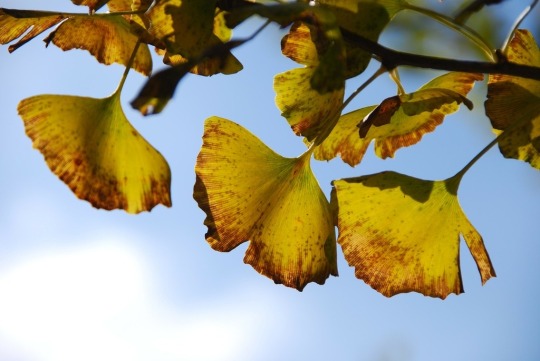
Hannah would never forget the moment she first laid eyes on a ginkgo tree.
It was shortly after she’d stepped off the plane from England. Amidst waiting with her entourage, she spotted the fan-leaved deciduous hiding within a rush of Japanese maple. Its green coloring stuck out like a sore thumb beside their purple foliage, then Hannah saw the unique leaf shape. At the time it was early April. When autumn arrived, the ginkgo’s matcha green would turn a vivid yellow not even the Temple of the Golden Pavilion could outshine.
Charles Darwin once dubbed the ginko a “living fossil,” and indeed his description was appropriate. Ginkgos were one of the oldest surviving trees in existence, believed to date back some 200 million years, if not, longer. So much time and history passed down from seed to seed. Staring up at one was like staring at a cornerstone of creation; what came before us, what will be here after.
Hannah could list an encyclopedia of facts about ginkgos. For one, they were gymnosperms, which was a fancy-shmancy way of saying they were nonflowering and only reproduced via seeds exposed to pollen, rather than inside fruits. This placed them in the same division (clade) as cycads and conifers. However, because of their uniqueness and specificity, ginkgos belonged to their own nomenclature. You could also guess the age by its stem coloration; The greyer the branches, the older the tree.
A native species brought over from China, the ginkgo would become a popular symbol within Japanese culture, both in art and in politics. The first European to study the deciduous tree was a German naturalist and explorer by the name of Engelbert Kaempfer. Upon visiting a temple in Nagasaki around 1691, he enquired the name of the tree, having never seen one before. But the native dialect of his tour guide got lost in translation, and so, he wrote down “ginkgo,” much to the confusion of every modern day Chinese and Japanese, for the word did not exist. The true name of the ginkgo is the “maidenhair tree” (銀杏) pronounced “ee-tchō.” Kaempfer’s mistake has never since been corrected.
Though for those not born in East Asia, ginkgos were a gateway to someplace more, a sign you had ventured outside the world as you knew it. For Hannah, this meant her impending marriage to Satoru, the clan leader of the noble Gojo family, one of the Three Sorcerer Families of Japan. It meant a different country. It meant change.
Maidenhair, she thought. Fitting that she’d spotted one so quickly, as she was set to be a maiden no more.
In time, Hannah would grow fond of the fan-leaved tree. It would shed its foreignness into something reminiscent of home; The Gojo estate was flush with ginkgo, drenching the house in nature’s botanical gold come October.
Which so happened to be now.
Hannah inhaled a deep breath as she readjusted her blanket, fighting off the early autumn chill. She should really stop doing this. It wasn’t smart to keep shoji panels open when the weather was cold; lets out all the heat. But she couldn’t help herself.
When the morning sun hit the forest at just the right angle, the mountainscape was too beautiful to ignore. It had to be witnessed by one’s own eyes.
Ginkgos. Maples. Japanese larches and pines.
She could stare at them for forever if she wanted, forgetting her worries and her cares. There was no place on earth more magical than Mt. Takao.
She heard a soft grunt immminating behind her and the rustling of bedsheets. Hannah turned around.
She saw the Berllini statue in the shape of her husband, sound asleep on her futon, a living artwork of sculpted abs and muscle. They had slept in her room again last night and had optioned the floor. He was butt naked underneath the covers, torso barely covered from alternating positions in his sleep. His exposed skin looked soft to the touch. She could hear his gentle snoring, snowy white hair strewn every which way atop the pillow. He’d be needing it cut soon.
Hannah smiled, thinking back to last night. If she closed her thighs together, real tight, she could still feel him there, pulsing and incessant. The love they made must’ve tuckered the poor man out. Not even the cold had awoken him.
Perhaps she should put some clothes on and head down to breakfast. Today was sure to be a busy one.
Satoru grunted once more and rolled over to his other side. His back was to her now, except the blanket hovering around his torso fell away, giving her a full profile of his arse.
Mind you, it was a pretty great looking arse. God must’ve taken His sweet time sculpting glutes like that, goodness.
Hannah suppressed a giggle from her naughty thoughts and rose from her perch along the opened shoji. Keeping quiet so as not to disturb him, she tiptoed toward the slumbering Adonis and draped one end of the blanket over to conceal his nakedness. There, bare arse no more.
As if sensing she was near, Satoru began to stir. “Mmm, Hannah,” he slurred loosely.
“Shh,” she hushed, crouching down to plant a comforting kiss on his temple. “Go back to sleep, darling.”
She had cast her spell, and the sorcerer drifted peacefully back to sleep.
And Hannah went back to staring at the golden ginkgos outside.
She wouldn’t trade this life for anything.
This country. This beauty. Her darling.
Chapter Contents
#jujutsu kaisen#呪術廻戦#gojo satoru#jjk oneshot#satoru gojo#jjk#oneshot#jjk fanfic#gojo fluff#gojo x oc#satoru x oc#jjk gojo#gojo takes a wife#銀杏#jjk fluff#fluff#nature
22 notes
·
View notes
Text
Nothing in the past, moreover, gave any cause to suspect ginseng’s presence so far away. Or even closer by: since antiquity, for well over a millennium, the ginseng consumed in all of East Asia had come from just one area -- the northeast mountainous lands straddling Manchuria and Korea. No one had found it anywhere else. No one was even thinking, now, to look elsewhere. The [...] [French traveler] Joseph-Francois Lafitau didn’t know this. He had been [...] visiting Quebec on mission business in October of 1715 [...]. He began to search for ginseng. [...] [T]hen one day he spotted it [...]. Ginseng did indeed grow in North America. [...]
Prior to the nuclear disaster in the spring of 2011, few outside Japan could have placed Fukushima on a map of the world. In the geography of ginseng, however, it had long been a significant site. The Edo period domain of Aizu, which was located here, had been the first to try to grow the plant on Japanese soil, and over the course of the following centuries, Fukushima, together with Nagano prefecture, has accounted for the overwhelming majority of ginseng production in the country.
Aizu’s pioneering trials in cultivation began in 1716 – by coincidence, exactly the same year that Lafitau found the plant growing wild in the forests of Canada. [...]
---
Since the 1670s the numbers of people [in Japan] clamoring for access to the drug had swelled enormously, and this demand had to be met entirely through imports. The attempt to cultivate ginseng in Aizu -- and soon after, many other domains -- was a response to a fiscal crisis.
Massive sums of silver were flowing out of the country to pay for ginseng and other drugs [...]. Arai Hakuseki, the chief policy maker [...], calculated that no less than 75% of the country’s gold, and 25% of its silver had drained out of Japan [to pay for imports] [...]. Expenditures for ginseng were particularly egregious [...]: in the half-century between 1670s through the mid-1720s that marked the height of ginseng fever in Japan, officially recorded yearly imports of Korean ginseng through Tsushima sometimes reached as much as four to five thousand kin (approx. 2.4–3 metric tons).
What was to be done? [...] The drain of bullion was unrelenting. [...] [T]he shogunate repeatedly debased its currency, minting coins that bore the same denomination, but contained progressively less silver. Whereas the large silver coin first issued in 1601 had been 80% pure, the version issued in 1695 was only 64% silver, and the 1703 mint just 50%. Naturally enough, ginseng dealers in Korea were indifferent to the quandaries of the Japanese rulers, and insisted on payment as before; they refused the debased coins. The Japanese response speaks volumes about the unique claims of the drug among national priorities: in 1710 (and again in 1736) a special silver coin of the original 80% purity was minted exclusively for use in the ginseng trade. [...]
[T]he project of cultivating ginseng and other medicines in Japan became central to the economic and social strategy of the eighth shogun Yoshimune after he assumed power in 1716. [...]
---
China and Korea were naturally eager to retain their monopolies of this precious commodity, and strictly banned all export of live plants and seeds. They jealously guarded as well against theft of mature roots: contemporary Chinese histories, for example, record that the prisons of Shenjing (present day Shenyang) overflowed with ginseng poaching suspects. So many were caught, indeed, that the legal bureaucracy couldn’t keep up.
In 1724, the alarming numbers of suspected poachers who died in prison while awaiting trial led to the abandonment of the regular system of trials by judges dispatched from Beijing, and a shift to more expeditious reviews handled by local officials. [...]
Even in 1721. the secret orders that the shogunate sent the domain of Tsushima called for procuring merely three live plants [...]. Two other forays into Korea 1727 succeeded in presenting the shogun with another four and seven plants respectively. Meanwhile, in 1725 a Manchu merchant in Nagasaki named Yu Meiji [...] managed to smuggle in and present three live plants and a hundred seeds. [...]
Despite its modest volume, this botanical piracy eventually did the trick. By 1738, transplanted plants yielded enough seeds that the shogunate could share them with enterprising domains. [...] Ginseng eventually became so plentiful that in 1790 the government announced the complete liberalization of cultivation and sales: anyone was now free to grow or sell it.
---
By the late eighteenth century, then, the geography of ginseng looked dramatically different from a century earlier.
This precious root, which had long been restricted to a small corner of the northeast Asian continent, had not only been found growing naturally and in abundance in distant North America, but had also been successfully transplanted and was now flourishing in the neighboring island of Japan. […]
---
Colonial Americans, for their part, had developed their own new addiction: an unquenchable thirst for tea. […] This implacable need could have posed a serious problem. [...] [I]ts regular consumption was a costly habit.
Which is why the local discovery of ginseng was a true godsend.
When the Empress of China sailed to Canton in 1784 as the first ship to trade under the flag of the newly independent United States, it was this coveted root that furnished the overwhelming bulk of sales. Though other goods formed part of early Sino-American commerce – Chinese porcelain and silk, for example, and American pelts – the essential core of trade was the exchange of American ginseng for Chinese tea. [...]
---
Yoshimune’s transplantation project had succeeded to the point that Japan actually became a ginseng exporter. As early as 1765, Zhao Xuemin’s Supplement to the compedium of material medica would note the recent popularity of Japanese ginseng in China. Unlike the “French” ginseng from Canada, which cooled the body, Zhao explained, the “Asian” ginseng (dongyang shen) from Japan, like the native [Korean/Chinese] variety, tended to warm. Local habitats still mattered in the reconfigured geography of ginseng. [...]
What is place? What is time? The history of ginseng in the long eighteenth century is the story of an ever-shifting alchemical web. [...] Thanks to the English craving for tea, ginseng, which two centuries earlier had threatened to bankrupt Japan, now figured to become a major source of national wealth [for Japan] .
---
Text by: Shigehisa Kuriyama. “The Geography of Ginseng and the Strange Alchemy of Needs.” In: The Botany of Empire in the Long Eighteenth Century, edited by Yota Batsaki, Sarah Burke Cahalan, and Anatole Tchikine. 2017. [Bold emphasis and some paragraph breaks/contractions added by me.]
#all kinds of fun stuff smuggling piracy biogeography medicinal tea shogunates secret orders#the irony of emerging US empire beginning relationship with china based on export of american ginseng which europeans hadnt known existed#the irony of japan quickly transitioning from almost being bankrupted by ginseng to becoming a ginseng exporter#the importance of local habitats and smallscale biogeography despite the global scale of imperial trade#the french cartographer in 1711 in manchuria who had never been to canada but correctly predicted ginseng might grow there#abolition#ecology#imperial#colonial
106 notes
·
View notes
Text
So Minecraft has new wolves!!
I am very happy about this, but it does make me curious what species each variation is based off of! You too? Awesome!
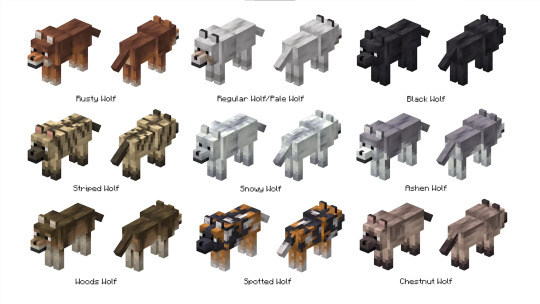
Rusty Wolf = Dhole



Seeing a little red jungle wolf took me right back to reading The Jungle Book as a kid, so I pretty much instantly decided they were dholes! A.k.a. Asian wild dogs or red dogs. They're an endangered canid native to Central, South, East and Southeast Asia, and they live in large clans ranging from 12-40 members.
Pale (Original) Wolf & Black Wolf = Grey Wolves
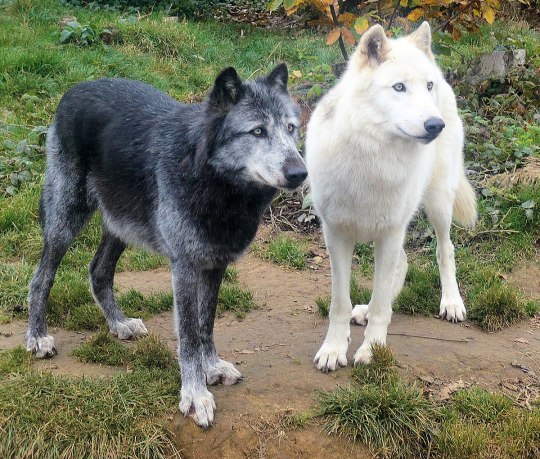
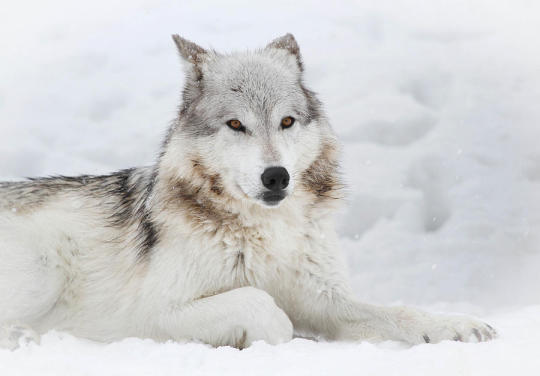
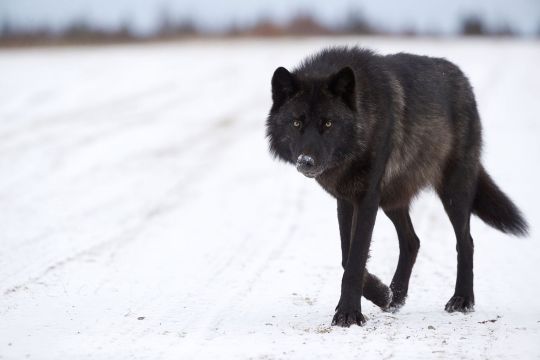
Our familiar friends have probably always been North American grey wolves, just pales ones! Despite their name, this iconic member of the canid family has an incredible amount of variation, and different subspecies of them are scattered all over North America.
Striped Wolf = Aardwolf
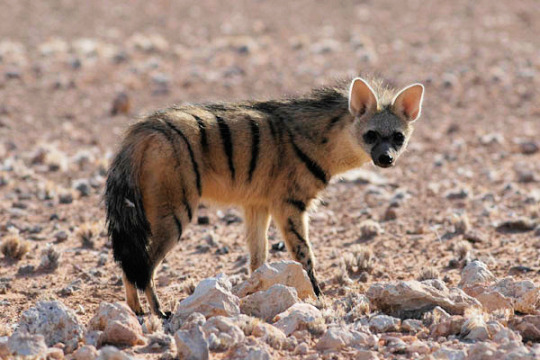
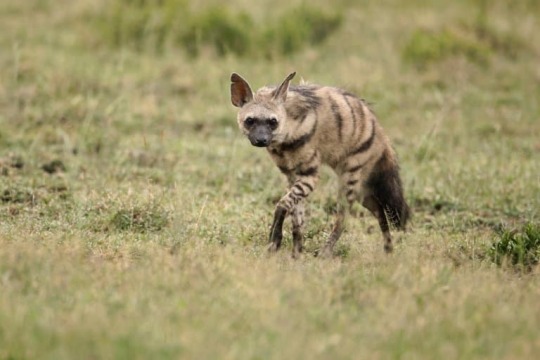
Okay, this is interesting, because they are definitely aardwolves! However, despite their names, aardwolves are actually the tiniest member of the hyaenidae family! Native to East and Southern Africa, they are exclusively insectivores and are known for following aardvarks to use their vacated burrows and foraging grounds. I think it's fascinating that a hyena was chosen for the wolf skins!
Snowy Wolf = Arctic Wolf

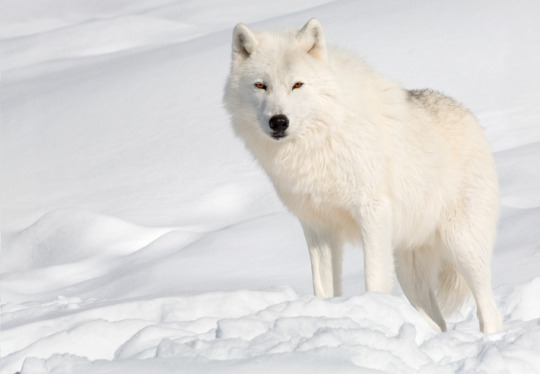
One of the many subspecies of gray wolves, arctic wolves are native to the Canadian Arctic and Alaska. Thanks to their territory being generally undesirable to humans, they are the only subspecies that can found across the entirety of their original range. Arctic wolves seem the most logical choice for snowy wolves, through there are several other pale-coated northern subspecies they could technically be.
Ashen Wolf = Northwestern Wolf


Speaking of northern subspecies, let's have some fun with the ashen variant. I'm pinning them as the Northwestern wolf, a.k.a. the Mackenzie Valley wolf! Native to, well, the northwestern part of Canada and Alaska, they are arguably the largest subspecies of wolf we know of. They match up pretty well with their Minecraft counterparts both in terms of habitat and possible coloration!
Woods Wolf = Eastern Wolf
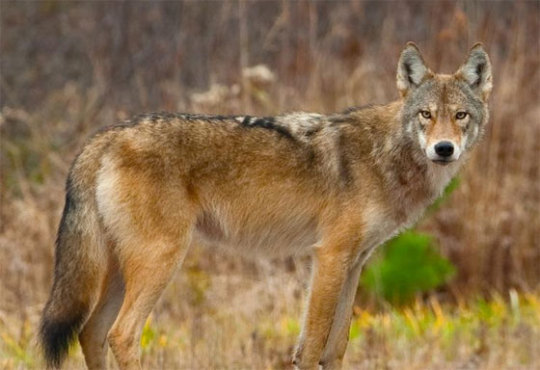
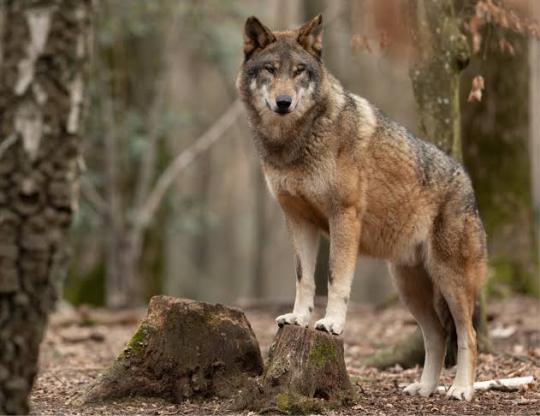
Ooo, okay, I went down a rabbit hole with this one! Eastern wolves, a.k.a Great Lakes wolves or Algonquin wolves, are native to the Great Lakes region of North America. They exist in an identification limbo, with no current ruling on whether they are a subspecies of grey wolf, red wolf, or their own unique branch that drifts closer to coyotes on the canid family tree. There is even some debate on whether the Great Lakes and Algonquin variants should be counted as the same subspecies, which I think is fascinating!
Spotted Wolf = African Wild Dog


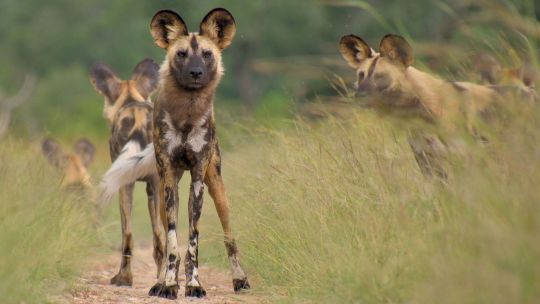
The more people who know these good bois exists, the happier I am. African wild dogs, a.k.a. painted dogs or Cape hunting dogs, are the largest wild canine in Africa. They live in packs of 5-30 members and are known their cooperative hunting tactics, using stamina to wear down prey. They're highly social animals, and you'll never find a lone dog.
Chestnut Wolf = Bat Eared Fox
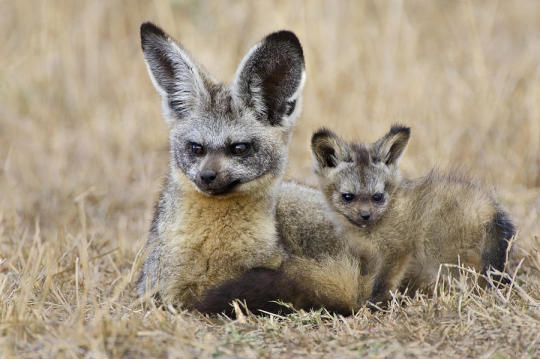
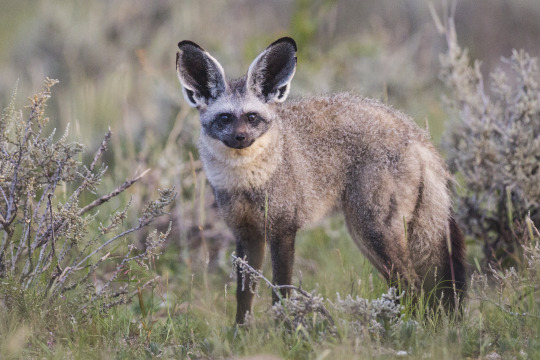
So, initially, I wrote off these guys cause I wasn't counting foxes, but I gave in. The chestnut wolves don't look like much of any existing canines, and nothing that lives in taiga forest. So, bat eared foxes are my best guess. They're small canids native to southern Africa, and are part of the subfamily Otocyoninae, which is a sister family to the families containing true foxes and racoon dogs.

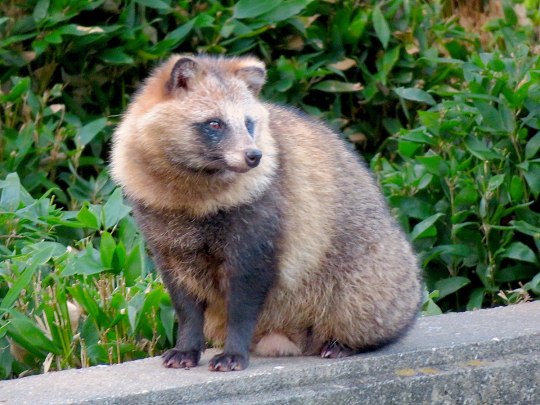
Speaking of raccoon dogs, they're my second best guess for the origin of the chestnut wolf. Their habitat makes slightly more sense, being from the forests of Japan and east Asia!
#i finally get to infodump on cool animals#also i learned A LOT researching for this!#minecraft#minecraft wolf#sharp has too many thoughts
20 notes
·
View notes
Text

Yo why is my country trending? People can't even find it on the map.
Edit:
So people know a little more about Singapore other than it's a racing track here's a little synopsis of my country.

This is Singapore. We're one of the tiniest countries in the world, about the size of half of the state of Rhode Island. We are so small we call ourselves the little red dot because you gotta zoom real close to find us on any world map.

Despite being so small we are a bustling city in the heart of South East Asia with 5.4 million people calling it home. It's one of the densest populations in the world in one area. But despite that we try our best to make our little island a home.

As we are in the tropical equator, nature and modernisation go hand in hand here. We sometimes are known as the solar punk city for our vertical forests and abundance of nature in the city. Land is very limited when your entire country is one island, so everything in Singapore grows up, from our sky scrapers to our forests.

The same goes for inside our buildings too. As a country primarily used as a business hub, shipping port and flight connection stop between airlines, we have the world's best airports and malls with stunning waterfalls in like this one, with efficient transport and AC in practically every mall you go to.

The streets are safe at night too as the city doesn't sleep even when the sun goes down. The roads are so bright at night the sky isn't even dark at night. Fun fact that weird creature spewing water is the symbol of our country the merlion, and we're one of the only countries represented by a mythical animal.

Singapore's not a perfect country. It's ridiculously hot here and there's lots of rules and regulations and we still need to work on many things like affordable housing and LGBTQ equality, but it's definitely a unique little island in the South East Asian part of the world with great food and great people.
Definitely check out my country if you're ever in the area, we're not just the setting for that one Crazy Rich Asians movie and the F1/Grand Prix.
#oh its the grand prix again#its weird how nobody in SG really cares about the annual racing tournament that happens in our country#but everyone else really cares about it A LOT#well anything to out my little country on the map i guess#singapore#singapore gp 2023
44 notes
·
View notes
Text
Nandhini's Legacy AU : Family Masterlist
A directory for all the Magical families that have a role in my Tamil!Potters AU titled Nandhini's Legacy
Nandhini's Descendants

Status: Extant
House Words: The Forests Answer to Us
Residence: House of Serpents (Western Ghats, Tamil Nadu, India); Nagaraja Hall (Gloucestershire, England)
Insignia: Cobra (Lotus Eater), cow, elephant
Colour/s: Green and gold
Head/s: Nithila, daughter of Aathirai (Main); Lily Potter (British branch); ████████ (Italian branch)
A South Asian Magical family from Tamil Nadu, with known branches in the United Kingdom and Italy. The main branch in Tamil Nadu do not carry surnames but as a collective they refer to themselves as Nandhini's descendants or Aditya's descendants. The United Kingdom branch carries the surname Potter. There is little information on the Italian branch. Should the main branch members find themselves in need of a surname for whatever reason, they have their pick of either Nandhini, Aditya, or Potter.
They are known for their unique variant of Parseltongue, commonly known as Potter's Parseltongue in the western world, and their unique connection with snakes. Their estates are known to house an extremely rare type of Magical snake called the Lotus Eater cobra, which appears in their heraldry.
The British branch is also known for their contributions to the country's Potions field and their work in the Magical ceramics industry.
The title of the Head and Heir of the family is primarily passed down the female line but only in secret. In the eyes of the public and the law, they practice patrilineal primogeniture like most other families. This specifically stems from old survival tactics of their ancestors but in the present day, the practice is continued out of respect and fondness of tradition.
They are known to rarely marry outside their South Asian circles, if at all. Regulus Potter ne Black is the first person who is not of South Asian descent to have successfully married into the family.
Through marriage, they are connected to the House of Black.
Notable members: Harry Potter, James Potter, Lily Potter (nee Evans), Regulus Potter (ne Black), Nithila, Lathishri, Kadhir, Iniyan
More information on the family
More information on members (Harry Potter, Lily Evans Potter, others TBP)
The House of Black

Status: Extant
House Words: Toujours pur (Always pure); Birthed by Shadows, Thrive in Darkness
Residence: 12 Grimmauld Place (Borough of Islington, London)
Insignia: Hawk, three crows
Colour/s: Black and maroon
Head/s: ████████ (Main); Sirius Black (British branch)
An ancient and powerful family whose earliest ancestor has been said to have lived as early as pre-Islamic Arabia. According to their own members, the family donned the surname of Black because their ancestors survived and thrived in the shadows of great kingdoms and empires.
In the present time, it said that the House of Black is so massive that their influential reach spans from North Africa all the way to West Asia. Smaller branches have left Asia and Africa and have settled somewhere else in the globe. One of the most notable branches would be their British branch which consists of at least three sub-branches. They are primarily known for their natural talent and extensive knowledge and use of Mind Magic, as well as their open usage and mastery of the Dark Arts.
Despite their fame and influence, little is actually known about the House of Black as a whole. Individual branch seats, heads and members are known, but the House's main seat and head remain a mystery even to the most prolific information hunters in the underground market.
The family's British branch is considered to be one of the country's Sacred Twenty-Eight. The British branch as at least three known sub-branches. The head British branch is historically Egyptian while the other two known sub-branches are historically Levantine (Palestinian) and Persian. The British branch is also notable for their tradition of naming their members after various objects in the night sky, from constellations to stars to natural satellites.
Famously, they rejected Dark Lord Voldemort's offer of allegiance in his first campaign. Orion Black, the Head at the time, has been reported to have told him that their family has "seen more formidable and competent Dark Lords back in the day". However, the family also did not make any moves to stop the Dark Lord's campaign either.
Like the other pureblood families, they generally refused to marry non-purebloods.
Through marriage, they are connected to the Potter family, the Lestrange family, and the Malfoy family, among other families.
Notable members: Sirius Black, Regulus Potter (ne Black), Andromeda Tonks (nee Black; estranged), Bellatrix Lestrange (nee Black), Narcissa Malfoy (nee Black)
More information on the family (TBP)
More information on members (TBP)
Maison Malfoyenne

Status: Extant
House Words: Sanctimonia Vincet Semper (Purity Will Always Conquer); Mountains Bow to River Rapids
Residence: Château de Port du Rhin (Port du Rhin, Strasbourg, France); Nadder Court (Wilton, Wiltshire, England)
Insignia: Mute swan, serpent
Colour/s: Blue and green
Head/s: Cassian Malfoy (Main); Lucius Malfoy (British branch)
A French magical family who trace their origins back to Strasbourg, France and Rhineland-Palatinate, Germany. Historically and traditionally, they are a family of lawmakers, judges, and politicians. Their main branch in Strasbourg is noted to have a hand at shaping the French Magical Parliament to what it is today and members of the family continue to hold significant power in the Magical Parliament themselves.
This tradition continues with the British branch of the family. Armand Malfoy established himself as a pillar of the early Magical British community shortly after arriving in the country and receiving land and a title from King William I. His descendants would go on to become notable members of the governing bodies of the time. The family has produced a certain number of Chief Warlocks and a couple of Supreme Mugwump candidates.
The family has a fondness for establishing their family estates nearby rivers. The main family seat of Château de Port du Rhin is located near the River Rhine, while the British seat of Nadder Court is located near the River Nadder. They are also known for their mastery of water magic.
In the Dark Lord Voldemort's first campaign, Lucius Malfoy had joined the ranks of his Death Eaters but soon defected once his then-fiancee and current wife Narcissa Malfoy nee Black made him choose between her or the Dark Lord.
The Malfoy branch of the family was listed as part of the Sacred Twenty-Eight. Like the other pureblood families, they generally refused to marry non-purebloods.
Through marriage, they are connected to the House of Black, the Lestrange family, and the Lovegood family, among other families.
Notable members: Lucius Malfoy, Narcissa Malfoy (nee Black), Draco Malfoy, Pandora Lovegood (nee Malfoy), Xenophilius Lovegood, Luna Lovegood
More information on the family (TBP)
More information on members (TBP)
Clan Weasley

Status: Extant
House Words: Roots Run Deep
Residence: The Burrow (Ottery St Catchpole, Devon, West Country, England)
Insignia: Rowan, oak
Colour/s: Orange and green
Head/s: Arthur Weasley
Historically a Scottish Highlands Pureblood clan, the Weasleys used to be protectors of a Magical part of the Caledonian Forest before they were driven out of their ancestral home around the time when the local Pureblood clan leaders were forced to hand over their authority to the growing power of the British Ministry of Magic. The Weasleys' portion of the Caledonian Forest was handed over to wandmakers under the Ministry and the Weasleys themselves were forced to relocate further and further away from their ancestral home until they settled in Devon.
The Weasleys' current residence is in Ottery St Catchpole where many of their relatives have also settled. Though they don't have the same power and strength they used to have, they were able to smuggle some saplings from their ancestral home and they have been caring for the trees that grew from those saplings in the years since.
Their Magic is closely tied to the earth and the trees they take care of. Many of them eventually end up in careers where they work closely with wood (carpenters, carvers, broom makers, Quidditch players) or the earth and the creatures that dwell in and on the earth (agriculturists, all sorts of animal caretakers, etc.)
They are also known to have fairly large family units, with their main branch currently having seven children in the youngest generation.
Notable members: Arthur Weasley, Molly Weasley (nee Prewett), William Weasley, Charles Weasley, Percy Weasley, Fred Weasley, George Weasley, Ronald Weasley, Ginevra Weasley
More information on the family (TBP)
More information on members (TBP)
The Park Clan

Status: Extant
House Words: Beware the Spider
Residence: Sangju Park Clan Ancestral Home (Hamchang-eup, Sangju, North Gyeongsang Province, South Korea); Sangjeon Pavilion (Staffordshire Moorlands, Staffordshire, England)
Insignia: Fox, star, spider
Colour/s: White and blue
Head/s: Park Ho-Jung (Main); Aloysius Parkinson (British branch)
[WIP]
Notable members: Aloysius Parkinson, Primrose Parkinson, Pansy Parkinson
More information on the family (TBP)
More information on members (TBP)
#harry potter#harry potter au#mine : nandhinis legacy au#mine : au#tamil potter family#harry james potter#james potter#lily evans potter#jily#jegulily#regulus black#house of black#sirius black#andromeda tonks#bellatrix lestrange#narcissa malfoy#lucius malfoy#draco malfoy#malfoy family#xenophilius lovegood#pandora lovegood#luna lovegood#weasley family#arthur weasley#molly weasley#bill weasley#charlie weasley#percy weasley#fred weasley#george weasley
12 notes
·
View notes
Text
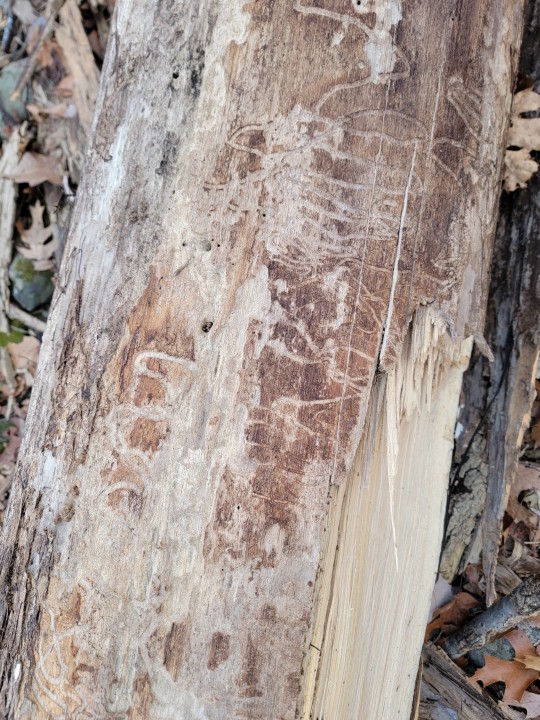



White Ash - Fraxinus pensylvanica
For this post I'm going to discuss the snags and reason I got back into ecology: The Ash Tree
Around the 1990s an insect from northeastern Asia was accidentally introduced to the Continental United States, by 2002 this insect was identified in Michigan after destroying several million acres of forest, this insect was the Emerald Ash Borer. The borer's larvae consume the living inner bark layer (leaving an interesting pattern), ultimately starving the tree of nutrients. The bark will often flake or peel off. By the year 2015, there were signs that the borer had spread to the east coast, its journey likely accelerated by the spread of firewood from infected logs, by 2019 nearly every mature Ash tree in Northern New Jersey was killed.
I grew up in a yard with twelve 150 year old Ash trees, the yard was adjacent to a section of Ash dominant forest, I watched the slow decline of all these trees, for half a decade I hoped our trees would be lucky enough to survive but unfortunately they all died within a few summers. Although the White Ash trees I encountered were wild from a 20th century clear-cut, they were a fairly common street tree around the northeast, straight growing, lovely bark and unfortunately most of the nursery stock was derived from a similar gene pool. There was little genetic diversity and many suburban neighborhoods were wiped of Ash trees. Many Ash trees were infested and look like the section of log I saved from my yard now (image below)

Suburban yards aside I quickly began to notice entire sections of forest filled with standing deadwood (image below). Worse yet white ash wasn't the only ash species affected, the entire genus is at risk. American Ash species often occupy a unique niche in cultivating young organisms which grow in vernal pools, the leaves of american ash are low in tannin, meaning they're one of the few leaves which are a suitable food source for young frog tadpoles. The loss of the ash means damage to American frog populations. It also means insects which utilized ash as a host are also at risk.
Ash also has quite a lovely ethnobotanical history, black ash is famous amoung various tribes around the northeast for its use in basket weaving. Historically Lenape elders would use the juice from white ash leaves for reducing swelling. More modern settler usages revolve around using the elastic yet study wood for baseball bats, oars, hockey sticks, and tool handles. My friends father used to raid his boss's construction sites at night to harvest ash slated for removal and deliver it to a baseball bat manufacturer for a decent payout. Ash also has a lovely grain visible in the broken log in the second image
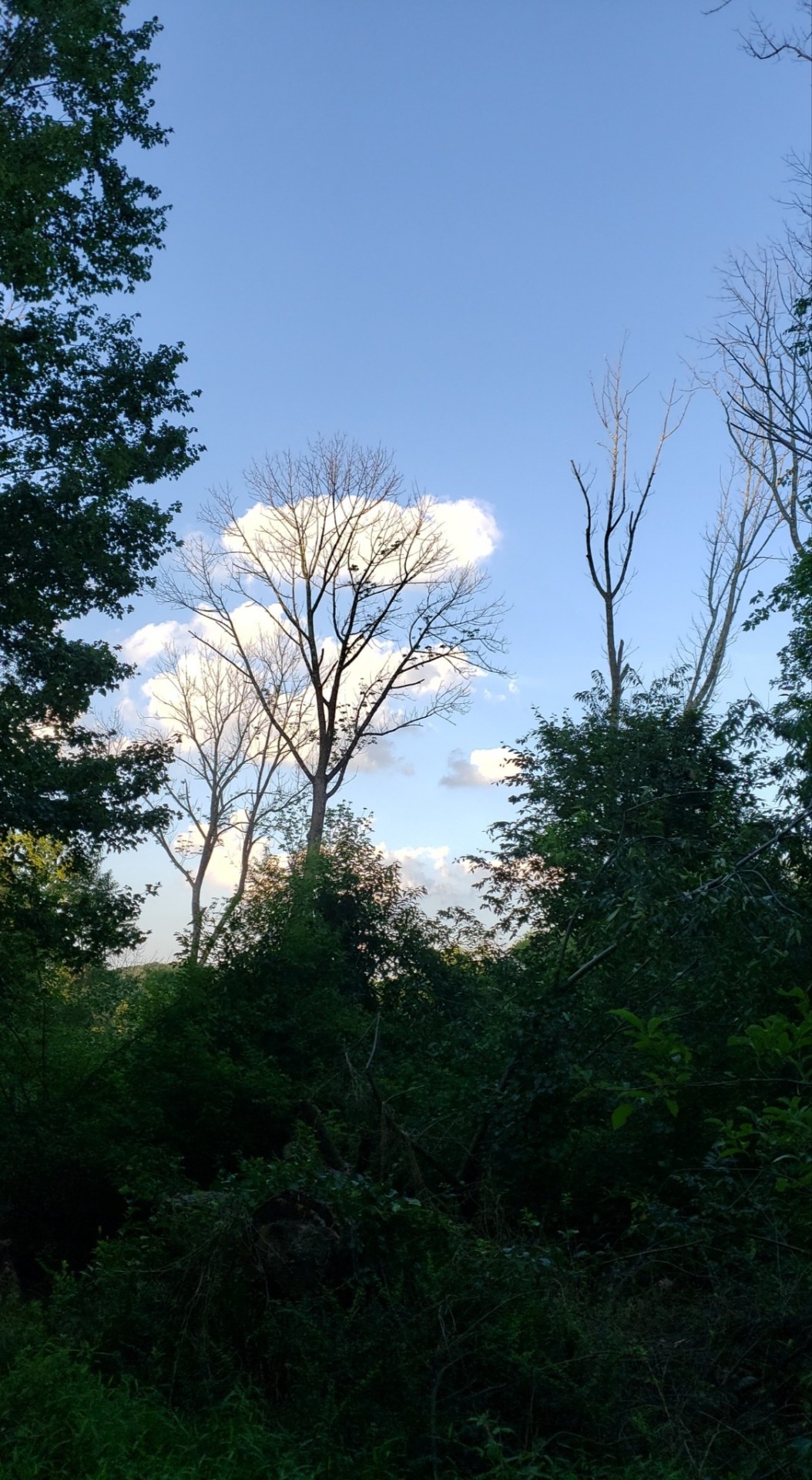
Ash forests now eerie snag filled openings which creak and occasionally fall on unsuspecting hikers. The thought of watching an entire forest ecosystem go really bothered me, ash swamps are unique, varied, there's something almost indescribable about growing up hearing early spring chirps from little tree frogs at night which are now silent. I left my job in architecture and started pursuing a degree related to landscape architecture and ecological planning (not that this is the answer). I started propagating ash trees where I could and planting them around. Unfortunately ash can't immediately return, invasive species often outcompete ash trees in their former forest, the added pressure ultimately reduces their ability to regenerate. The borer has spread so far there is little we can do to remove it, however there is a positive effect with biological control via the borers' specific parasitic wasp.
Is this the end of the ash? Hopefully not. I still find saplings throughout the woods, ash can be aggressive in the right conditions, can they survive into maturity is another question. Perhaps in another century, more will return, and ash will occupy our woods once more. Like the Chestnut work is being done to breed more resistant species.
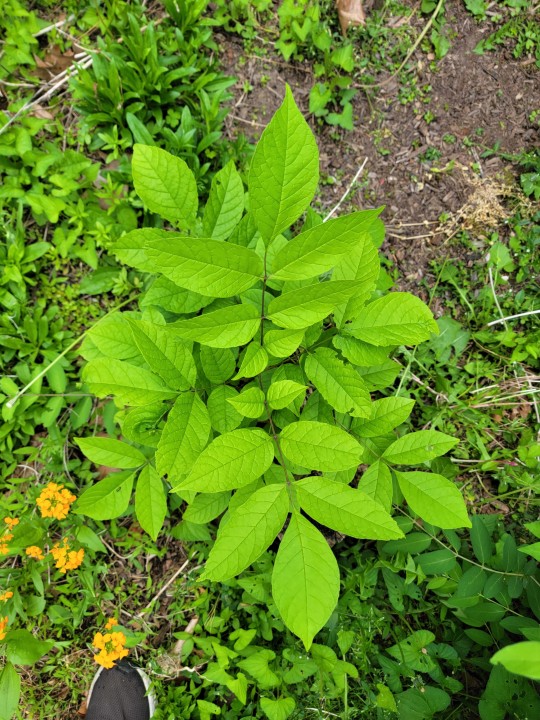
10 notes
·
View notes
Photo
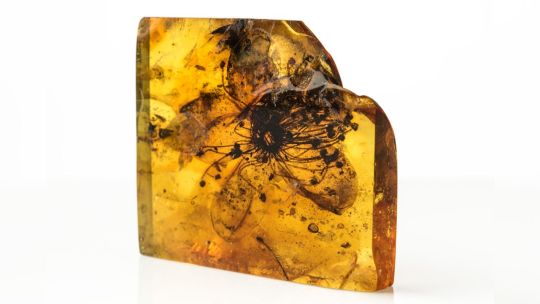
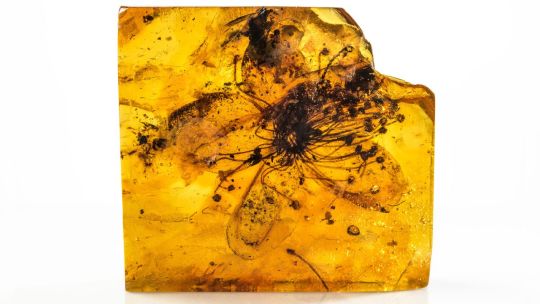
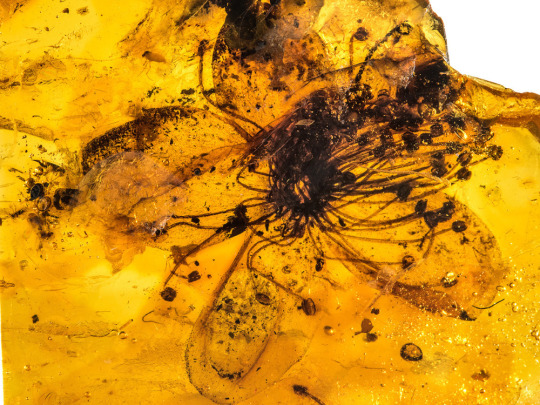

The Largest Known Flower Preserved in Amber
Almost 40 million years ago a flower bloomed in a Baltic conifer forest. Dripping tree resin encased the petals and pollen, forever showcasing an ephemeral moment in our planet’s past.
Scientists have taken a fresh look at the unique amber fossil, which was first documented in 1872 as belonging to a pharmacist called Kowalewski in what’s now Kaliningrad, Russia.
The striking fossil had been languishing largely forgotten in the collection of the Federal Institute for Geosciences and Natural Resources in Berlin (BGR), according to Eva-Maria Sadowski, a postdoctoral researcher at the Museum für Naturkunde, Berlin’s natural history museum, and author of the new study.
She said she heard about the fossilized flower, officially known as specimen X4088, in passing from a retired colleague, who she thought was exaggerating.
“He told me that he once visited the BGR and that (he) saw the most amazing and largest amber flower in their collection. I was not aware that they had an amber collection. So I asked the curator of the BGR collection if I could come to see their collection – and there I found the specimen X4088,” she said via email.
“I was more than surprised to see such a large flower inclusion.”
At 28 millimeters (1.1 inches) across, it’s the largest known flower to be fossilized in amber – three times the size of similar fossils.
Sadowski extracted and examined pollen from the amber. She found that the flower had been misidentified when it was first studied.
“The original genus name of this specimen was Stewartia of the plant family Theaceae. But we could show in our study that this was not correct, mainly based on the pollen morphology. But when the specimen was first studied in the 19th century, they (had) not discovered or studied the pollen,” she said.
The flower is closely related to a genus of flowering plants common in Asia today known as Symplocos – shrubs or trees that sport white or yellow flowers.
Originally named Stewartia kowalewskii, the authors propose a new name for the flower of Symplocos kowalewskii.
By Katie Hunt.
#The Largest Known Flower Preserved in Amber#Federal Institute for Geosciences and Natural Resources in Berlin#Symplocos#Symplocos kowalewskii#amber#fossil#yellow#retty#beauty#beautiful#ancient artifacts#science#scientists#history#history news#ancient history
63 notes
·
View notes
Text
WHAT IS FORGOTTEN SIBERIA?
If we try to describe the essence of Forgotten Siberia, then this is a speculative project about... parareptilia. Hmm, perhaps you remember the same spec from Kozman, the author of "All Tommorows"? We took same idea, but whith 🤓 energy - basically decided to make it as realistic and able to fit into our reality as our data allows.
In shot, a primitive seymouria-like creatures traveled on Sibiria continent and slowly move in taiga-like north forests, were started evolving in some bizarre forms called Angarovenators before Siberian traps caused the Great Persian Extinction and burn almost all angarovenators bones.


Kosmen's parareptilias
P.S. Some paleontologists, like Mikhail Ivakhnenko, include Seymouriamorphs in Parareptilia, but modern science considers they to be Reptiliomorpha.
Too complicated? Let's try to explain below.
Spec himself grew out of a little-known fact. In the distant past, before the beginning of the Triassic period, China, Kazakhstan, Uzbekistan and Tajikistan, as Laurussia well as the eastern part of Russia — Siberia, were not part of Pangea, but formed 2 separate continents — Katasia (China) and Siberia (the rest of the countries). The last continent is called Angraida in Russian, after one of the largest rivers in North Asia. At first, these continents were separated from the rest of the land by the Ural Ocean, then by the Ural Mountains and the new sea, then comparable to the Himalayas, when formally this territory collided with Laurussia, the northern part of Pangea. It was in this area that the Siberian traps spread, destroying 90% of the species on Earth and causing the Great Extinction of the Persians.

Earth 340 million years ago. Yellow land - continent Sibiria or Angarida (not misunderstood whith modern region). Relative to the current position of Asia, this continent is rotated 90 degrees counterclockwise, so Magadan was at the north pole. Angarida include Eastern Siberia, Kazakhstan, Uzbekistan and Tajikistan. Red land is Cathaysia - modern China.
And now the main nuance: in Siberia (starting from the eastern slope of the Urals), almost no vertebrate fossils dating back to the Carboniferous or Permian period have been found. The exceptions are the branchiosaurid Tungussogyrinus (Sibiria), who lived 250 million years ago, as well as the reptiliomorphs (Discosauriscinae) who lived 300 million years ago: Ariekanerpeton (Tajikistan, possibly Uzbekistan), Utegenia (Kazakhstan, China) and to a lesser extent Gnorhinosuchus (Kazakhstan). At the same time, an extensive fauna of synapsids, amphibians and reptiles was discovered in China and in the western foothills of the Urals. This means that the species quietly migrated to these continents, but did not inhabit Siberia.

Utegenia. Literally all terrestrial vertebrate from Angarida resembled axolotls. Also the Ariekanerpeton's larvae even had flippers that became limbs after metamorphosis. Interestingly, no fully grown individuals have been found in this species.
So, why Sibiria is empty?
First, it is worth remembering that relatively many insects, brachiopodas and other invertebrates lived in Siberia. Despite the lack of competitors, they did not grow as big as Arthropleura or Meganeura. Soon you will be able to guess for yourself why.
Secondly, it was a unique environment. Siberia was filled with a special, endemic ecosystem - humid Cordaites, taiga and even tundra. Yes, you heard right: in the Carboniferous and even the Permian period there was the Karoo ice age, which led to the formation of a temperate and Arctic climate. So maybe it was too cold?
Maybe. However, some African dicynodonts (they also found on the western slope of the Urals) lived in approximately temperate climates. Also, no one cancels the possibility of the existence of small reptilian and amphibian forms capable of hibernation, like modern live-bearing lizards and Siberian salamander.


Siberian salamander. and her habitat. The species is known for surviving deep freezes (as low as −45 °C)
Our spec explores the strangest explanation: the territory was early (320-310 millions years ago) occupied by poorly preserved forms who not displaced by more advanced amniotes due to their high adaptability to cold temperatures. Perhaps their skeleton was not completely calcified, and they were rare, which prevented them from being preserved in the geological history of the Earth. Moreover, a unperfect paleontological study of Siberia could also play into the absence of fossils of Siberian tetrapods.
Ariekanerpeton, Gnorhinosuchus (subfamily Discosauriscinae) and Utegenia (family Kotlassioidea) turn out to be the best candidates, since they were the first to settle on the continent at all. Considering that Ariekanerpeton and Gnorhinosuchus are much closer to the European Discosauriscus of the same time than Utegenia, the migration of seymuriamorphs occurred at least twice; moreover, these species could well be the ancestors of the Kotlassia, Microphon and Karpinskiosaurus found in the Urals, respectively. Speck suggests that the descendants of Utegenia remained in warmer regions, while the more land-based Ariekanerpeton split into southern and northern branches. The latter gave rise to the Angarovenator clade - small and medium-sized amphibians animals, more adapted to the dry land rather the rivers and lakes shores. Technically, this group would become convergent to the real Seymourias.


Kotlassia and Karpinskiosaurus, 265-252 millions years ago. Found in same place as Inostrancevia
Below is the first sketch diagram of Seymouriamorphas evolution, where the length of each rectangle corresponds to the life span of the species:

So, some fist speculated species:

Poseideongenia, "Mother of the Month of Poseidon". Ancestor of Seymouriamorphs from all Laurussia, 320-310 millions years ago. Omnivorous terrestrial predator, gravitating towards reservoirs. The skull is approximately commensurate with Seymuria and does not exceed 10 cm in length. The vertebrae are not fully fused and resemble those of embelomers: the body is squat and elongated, the head is quite large. It has osteoderms on its belly. Fist who migrated in Siberia. The process was similar to the migration sof Monkeys to South America on wood rafts, with the only difference that Poseideongenia can stop eating for month like modern amphibians and reptiles. A direct descendant of the Siberian Poseideongenia - Utegenia. Unlike the offspring, the species larvae also have fins instead of limbs.
Moropeton, "Baby snake": ancestor of Discosauriscus from Moscow forests, 310-305 millions years ago. The collapse of forests in the Carboniferous divided the European population of Poseideongenia into several parts, one of which became. This population also began to crumble, and it was the inhabitants of the Moscow forests who were able to cross the Ural Ocean again, but in Siberia they faced the future Utegenias. Some species remained in the south, gradually losing competition to their relatives (Ariekanerpeton, Karpinskiosaurus), adapting more and more to an aquatic lifestyle: but the rest went north. The vertebrae are not fully fused and resemble those of embelomers: the body is squat and elongated, the head is quite large. The skull is slightly less than 8 cm. Osteoderms are found only in larvae.
Erimopeton, "Desert snake": ancestor of the Angarovenators, an animal with a shortened life cycle and adaptation to deserts (300-280 millions years ago). Perhaps (it has not yet been clarified) the southern territories and the taiga of Siberia could be separated by a desert area and mountains - another barrier for animals, so that Angarovenators are divided into mountain and desert species. The size of the skull is about 5 cm. Desert forms have a special wrinkled skin, dry and covered with a lot of keratin plaques, which they shed. Wrinkles are designed to preserve and collect moisture from the desert air. They lay caviar during the rainy seasons or migrating to wetter mountains, where the larvae undergo an accelerated development cycle (a week versus 20 years in Ariekanerpeton). Later species evolved from this clade. Some species, on the contrary, rely on desert rains and eventually became completely neotenic one-day forms.
Pustulasuchus?, "bubbleskin crocodiles": Descendants of late desert forms that developed a special bubbly skin. Keratin shields have become scales, under which bubbles are formed that can be filled with either water or carbon dioxide (taken from the blood). These bubbles can work both as a hydraulic muscle that lifts scales, and as a cooling or heat-trapping surface. These species are medium-sized predators that inhabit the northern forests of Siberia.
Pennasuchus?, "feathered crocodiles": It's a crazy idea that Angarovenators create their own analogue of a feather and archive new ability - gliding flight. This idea is taken from Spec's early ideas and we are not sure if it will be possible.
So far, this is all that is on the list. New issues will be released soon that will more accurately consider the evolution of Hangar Generators and their neighbors. And before we say goodbye, we'll give you some early spec concepts…
OLD CONCEPTS

Old concept of Pustulasuchus. Initially, the ancient diapsids were considered the ancestors, but this idea has become too far-fetched

Discarded evolution of Angarovenator skulls as eureptilians. In this version, the Angaroventors, independently of other treasures, had temporal windows for 15 million years due to acidic upper marshes and demineralization of the skeleton. However, it turned out that the forests of Angarida were not so deficient in minerals

Papiasaurus, duck-like lisard is the penosuchus occupying the niche of a platypus. Most likely, the seymouries retained electroreceptors.

Pustulasuchus and Pennasuchus Kikimosaurus. These concepts were created before the Seymouriamorphas idea, so drawings are not relevant.

Pennasuchus Kikimosaurus and primitive Pennasuchus species. These concepts were created before the Seymouriamorphas idea, so drawings are not relevant. There also used to be the idea that Angarovenators are the ancestors of Longisquama, which explains the presence of dorsal feathers in these versions.
The article was created with the help of a translator. If English is bad, I'm sorry. If you have a VK account and speak Russian, then you can get acquainted with the project here.
The project has been created by ANIMARAPTOR.
3 notes
·
View notes
Text

SOMEBODY ONCE TOLD ME-
I know it’s been a very long while since our last episode, but after dealing with other projects, along with real life getting in the way from time to time, we’re finally continuing our next part of the second road trip across the Maasrichtian. While it only has 5 segments like the last episode, and does borrow some of last season’s “Freshwater” thunder quite a bit, I still had a good time with Swamps. And the segments presented here do bring a few things to the table for PHP in general. You’ll see what I mean when we get into them.
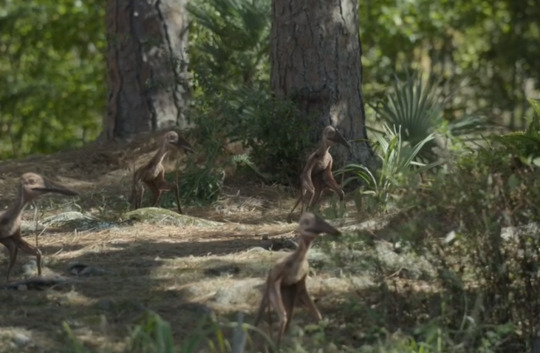
Snacks on the wing
The episode starts with the wetlands of Asia, where baby azhdarchid pterosaurs are attempting to fly for the first time. Keeping up with this show’s record of baby animals meeting their end, the pterosaurs have to deal with the threat of getting eaten by a horde of Shamosuchus. Unlike the Simosuchus from earlier in the season, these relatives to today’s crocodiles and alligators comfort more to the shape that we’re used to seeing these reptiles in. While I don’t have much to say about this segment, I find it cool how it draws comparisons with how Freshwater crocodiles hunt flying foxes in Australia. Even when millions of years apart, some hunting strategies are just that good.

Gone fishin’
The episode then cuts to the forests of South America, where the focus is on a truly unique animal; Austroraptor. For those not aware, this was a species of raptor dinosaur that was not only huge for its family (Think 20 feet long), it also lived a life of hunting fish. These of these guys like what would happen if a grizzly bear and a heron had a baby together. The plot of this segment shows a young male trying to score some lunch of his own. Many of the larger adults can only only catch garfish like it’s not their problem (which is something that our male is new to), but they can be aggressive, often attacking each other if one of them disrupts the other’s hunt. Until he learns how to catch prey successfully, the best option that the main male has to take is to snatch someone else’s prey, and try not to lose at least a few feathers in the process.
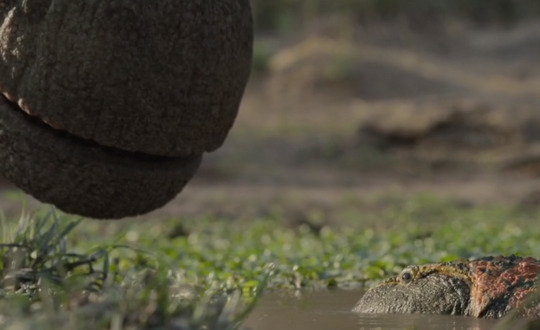
“Hippity hoppity, get off my property”
We then cut back to Madagascar to see the return of another Season 1 veteran. Y’all must’ve loved Beelzebufo so much, you all wanted to see more of the bay dinosaur-eating frog (And I really wouldn’t blame any of y’all). And fortunately, Apple heard everyone’s pleas for the devil toad to return, so here we are! The segment has a male Beelzebufo trying to find a good place to attract a mate. Unfortunately for the frog, a herd of Rapetosaurus just happened to come back and waddle in the mud, making things even harder for the Beelzebufo. That must be frustrating.
The Beelzebufo then has to find a new place to set up his courtship display, away from the titanosaurs. After a bit of hopping around, and even doing this…
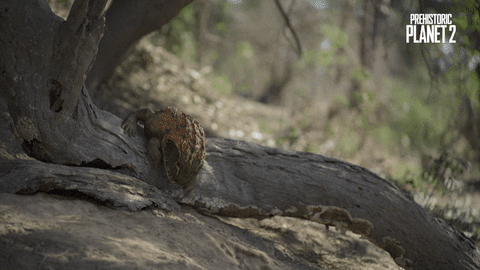
Keep on rollin’
Our champ eventually finds a good enough spot to try again, with the Rapetosaurus herd moving on. They even leave footprints in the mud that get filled with water. The only complaint that I have for this scene is the lack of the Beelzebufo raising his eventual tadpoles. The concept art for the devil toad that was made by Gaëlle Seguillon refers to it as “Beelzebufo adult”, so it could be possible that devil tadpoles were considered to be in the show. Either that, or we could see another Beelzebufo-themed segment in a possible Season 3, taking alot of inspiration from how African bullfrog males raise their young. I may or may not be planning to add that to my hypothetical Season 3 idea, so keep your eyes peeled.

Head Games
Despite the episode literally being called “Swamps”, we cut to a dusty plain in North America, where the area in question used to be a swamp that eventually dried up. It’s here where we see the second pachycephalosaur of the series in the form of Pachycephalosaurus itself. It’s no secret that the domed heads of these creatures were used for some sort of territorial display, so we see an older male fighting a younger and rowdy male, who has been causing trouble for the herd. After a long and hard duel, the old male is knocked down, and his younger rival bellows out in victory. This turns out to be a bad idea, as it gives the old male time to get back up and strike down his rival. With the battle lost, the young male is then exiled from the herd, where he has to fend for himself. I’m not gonna lie, he’s gonna need everything in his kit to survive. Y’know why?
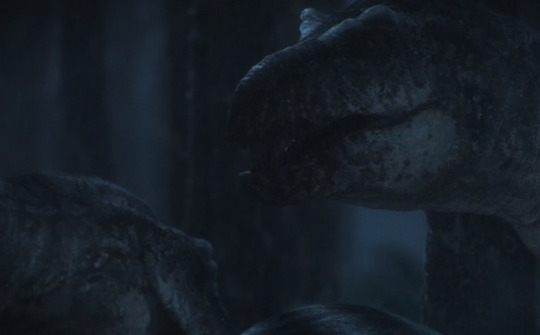
In the night, no one can hear you roar
The last segment of the episode shows us how basically terrifying T. Rex can be when hunting. After the last season shows how these giant predators can be doting parents or a loving couple, this segment serves as a reminder that this is still Tyrannosaurus Rex that we’re talking about. When night falls on the floodplains of Hell Creek, a couple of T. Rex brothers stalk around the forest, spying on a group of Edmontosaurus. The two split up, with one of them stepping on a fallen branch, intentionally causing the herd to get nervous. Thanks to their padded feet muffling any heavy footsteps that could be heard, along with their extremely good night vision, the predators spring into action. While one of them lunges for an Edmontosaurus, the latter is sent towards the other T. Rex. With both of them clamping their bone-crushing jaws into their hapless prey, the hunt is soon over, and the two get to enjoy their hard-earned meal. A funny thing to mention is how neither of the T. Rex crashed into the opening, roaring as they charged towards their prey. Large predators cannot afford to waste precious energy by running out and screaming like a mad man, so they need to be careful, often turning to ambush tactics to catch prey. If anything, this instance of averting usual pop-culture depictions of dinosaurs serves to make these beasts scarier than they already were. Unlike the mindless, perpetually roaring and shrinking movie monster that shakes the ground itself with every step, you’d never see or hear the real thing coming, until it’s too late…
youtube
This takes the phrase “Bonehead” to a new level
The Uncovered segment of the episode takes a closer look at how pachycephalosaurs like Pachycephalosaurus used their domed heads in fighting. I don’t have alot to say about this part, but I can say that headaches must be a major pain when it comes to these guys.
And with that, we only have 2 episodes left. I apologize for pumping this review out late into the month. Being busy with other projects, along with dealing with real life stuff and being a lazy ass from time to time can do that to you. Nonetheless, the next review on our list covers one of my favorite episodes in the entire series so far, so that’ll be fun when we get to it. Get ready to “dive” in again next time, because we’re gonna be soaking up the thirst of the land.
…I hope you laughed at that joke.
13 notes
·
View notes
Text
Round 2, match 4: skrunkly little guys
Aye-aye (Daubentonia madagascariensis)

A lemur you will likely all have heard of! They live in the canopy of tropical forests, weaving little nests to sleep in during the day. At night, they come out to feed- sometimes on fruits and seeds, but they’re most well known for their unique way of hunting grubs. By tapping their spidery fingers on wood, they can hear insects hiding within. When they find one, they chew a hole through the wood with their incisor teeth, before reaching in with their thin middle finger to fish out the grub. Yum?
Pygmy tarsier (Tarsius pumilus)

Tarsiers are tiny, nocturnal primates found in Southeast Asia. They may be cute, with eyes almost as large as their brains, but they are actually the most carnivorous primates. They hunt mostly small arthropods, like insects and arachnids.
The pygmy tarsier is perhaps the most unusual tarsier species. They are tiny, weighing less than two ounces, and they live in the highland forests of Sulawesi. They are also incredibly elusive- they are rare, and their calls are probably outside the range of human hearing. Because of this, they were not seen for eighty years, long assumed extinct since the 1920s. It was not until 2008 that a group of scientists were able to observe living members of this species, confirming they were still alive.
21 notes
·
View notes
Text
Round One: Sanxiasaurus vs Changmiania
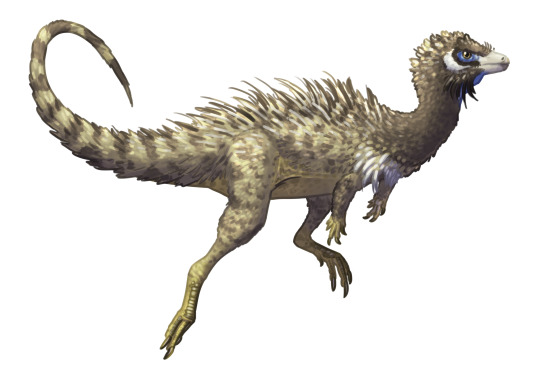

Factfiles:
Sanxiasaurus modaoxiensis

Artwork by @i-draws-dinosaurs, written by @i-draws-dinosaurs
Meaning: Sanxia lizard (after the Three Gorges of the Yangtze River) from Modaoxi (first tributary of the Yangtze)
Time: 170 million years (possibly Aalenian stage of the Middle Jurassic)
Location: Xintiangou Formation, Chongqing, China
Sanxiasaurus is a little ornithischian dinosaur named in 2019. Specifically, it’s a basal neornithischian, a group whose name has been known to induce spontaneous headaches among palaeontologists. Neornithischia is the group that includes ceratopsians, hadrosaurs, and many earlier forms, but the base of the group contains a whole truckload of little scampery bipedal critters who have proven very difficult to organise into a stable family tree. Sanxiasaurus seems to be one of the most basal of the group, and is actually the oldest ornithischian currently known from Asia! Living in the Xintiangou Formation, Sanxiasaurus shared its environment with lungfish, ray finned fish, sharks, temnospondyls, saruopterygians, crocodyliformes, turtles, and the theropod Yunyangosaurus, which was probably its main predator.
Changmiania liaoningensis

Artwork by @i-draws-dinosaurs, written by @zygodactylus
Name Meaning: Eternal Sleeper from Liaoning
Time: 125.755 million years ago (Barremian stage of the Early Cretaceous)
Location: Lujiatun Beds, Yixian Formation, Liaoning, China
Changmiania is a gorgeously preserved ornithopod known from the earliest time of the famed Yixian Formation, adding it to the ranks of amazing fossils known from this unique preservational environment. The multiple specimens of this species are found in sleeping poses, curled up on the ground with their legs and arms tucked up against them. This indicates they had been buried alive, possibly inside their own burrows. Given the depositional environment of Yixian is a sort of prehistoric Pompeii, with many dinosaurs covered very quickly in ash and dust from an exploding volcano, this makes a certain degree of sense - perhaps the two little dinosaurs had scurried into their burrow to escape the oncoming tragedy (sorry if I just made you sad), or had been asleep and unaware of the oncoming danger. At only one meter long and less than half a meter tall, Changmiania would have been easily missed in its environment, hiding among the dense vegetation from potential predators. With robust leg bones, it would have been a fast runner, able to move efficiently through the crowded undergrowth. It had a weirdly short neck for ornithischians, and that combined with its short forearms and hands indicates it was fossorial - ie, a digging animal, hence its burrow home and final resting place. Given they were found together, they were probably social creatures as well, living in small family groups. The Yixian was a dense temperate forest, filled with freshwater lakes and a great diversity of plantlife. Conifers, ferns, cycads, horsetails, and early flowering plants filled the environment and indicated a humid, possibly rainforest environment. Periodic wildfires, noxious lake gasses, and volcanic eruptions all lead to regular moments of rapid burial and amazing preservation in this environment - essentially giving us snapshots of how it changed over the course of many millions of years. In the Lujiatun bed specifically, Changmiania was neighbors with Euhelopus, Jeholosaurus, Liaoceratops, Psittacosaurus, Liaoningornis, Daliansaurus, Graciliraptor, Mei, Sinovenator, Sinusonasus, Dilong, Hexing, Incisivosaurus, Shenzhousaurus, and outside of dinosaurs mammals such as Acristatherium, Gobiconodon, Juchilestes, Maotherium, Meemannodon, and Repenomamus (yes, THAT Repenomamus), and the toad Liaobatrachus.
DMM Round One Masterpost
#dmm#dinosaur march madness#dmm round one#dmm rising stars#palaeoblr#dinosaurs#paleontology#bracket#march madness#polls#sanxiasaurus#changmiania
233 notes
·
View notes
Text
Q&A: Claire Walsh on how J-PAL’s King Climate Action Initiative tackles the twin climate and poverty crises
New Post has been published on https://thedigitalinsider.com/qa-claire-walsh-on-how-j-pals-king-climate-action-initiative-tackles-the-twin-climate-and-poverty-crises/
Q&A: Claire Walsh on how J-PAL’s King Climate Action Initiative tackles the twin climate and poverty crises


The King Climate Action Initiative (K-CAI) is the flagship climate change program of the Abdul Latif Jameel Poverty Action Lab (J-PAL), which innovates, tests, and scales solutions at the nexus of climate change and poverty alleviation, together with policy partners worldwide.
Claire Walsh is the associate director of policy at J-PAL Global at MIT. She is also the project director of K-CAI. Here, Walsh talks about the work of K-CAI since its launch in 2020, and describes the ways its projects are making a difference. This is part of an ongoing series exploring how the MIT School of Humanities, Arts, and Social Sciences is addressing the climate crisis.
Q: According to the King Climate Action Initiative (K-CAI), any attempt to address poverty effectively must also simultaneously address climate change. Why is that?
A: Climate change will disproportionately harm people in poverty, particularly in low- and middle-income countries, because they tend to live in places that are more exposed to climate risk. These are nations in sub-Saharan Africa and South and Southeast Asia where low-income communities rely heavily on agriculture for their livelihoods, so extreme weather — heat, droughts, and flooding — can be devastating for people’s jobs and food security. In fact, the World Bank estimates that up to 130 million more people may be pushed into poverty by climate change by 2030.
This is unjust because these countries have historically emitted the least; their people didn’t cause the climate crisis. At the same time, they are trying to improve their economies and improve people’s welfare, so their energy demands are increasing, and they are emitting more. But they don’t have the same resources as wealthy nations for mitigation or adaptation, and many developing countries understandably don’t feel eager to put solving a problem they didn’t create at the top of their priority list. This makes finding paths forward to cutting emissions on a global scale politically challenging.
For these reasons, the problems of enhancing the well-being of people experiencing poverty, addressing inequality, and reducing pollution and greenhouse gases are inextricably linked.
Q: So how does K-CAI tackle this hybrid challenge?
A: Our initiative is pretty unique. We are a competitive, policy-based research and development fund that focuses on innovating, testing, and scaling solutions. We support researchers from MIT and other universities, and their collaborators, who are actually implementing programs, whether NGOs [nongovernmental organizations], government, or the private sector. We fund pilots of small-scale ideas in a real-world setting to determine if they hold promise, followed by larger randomized, controlled trials of promising solutions in climate change mitigation, adaptation, pollution reduction, and energy access. Our goal is to determine, through rigorous research, if these solutions are actually working — for example, in cutting emissions or protecting forests or helping vulnerable communities adapt to climate change. And finally, we offer path-to-scale grants which enable governments and NGOs to expand access to programs that have been tested and have strong evidence of impact.
We think this model is really powerful. Since we launched in 2020, we have built a portfolio of over 30 randomized evaluations and 13 scaling projects in more than 35 countries. And to date, these projects have informed the scale ups of evidence-based climate policies that have reached over 15 million people.
Q: It seems like K-CAI is advancing a kind of policy science, demanding proof of a program’s capacity to deliver results at each stage.
A: This is one of the factors that drew me to J-PAL back in 2012. I majored in anthropology and studied abroad in Uganda. From those experiences I became very passionate about pursuing a career focused on poverty reduction. To me, it is unfair that in a world full of so much wealth and so much opportunity there exists so much extreme poverty. I wanted to dedicate my career to that, but I’m also a very detail-oriented nerd who really cares about whether a program that claims to be doing something for people is accomplishing what it claims.
It’s been really rewarding to see demand from governments and NGOs for evidence-informed policymaking grow over my 12 years at J-PAL. This policy science approach holds exciting promise to help transform public policy and climate policy in the coming decades.
Q: Can you point to K-CAI-funded projects that meet this high bar and are now making a significant impact?
A: Several examples jump to mind. In the state of Gujarat, India, pollution regulators are trying to cut particulate matter air pollution, which is devastating to human health. The region is home to many major industries whose emissions negatively affect most of the state’s 70 million residents.
We partnered with state pollution regulators — kind of a regional EPA [Environmental Protection Agency] — to test an emissions trading scheme that is used widely in the U.S. and Europe but not in low- and middle-income countries. The government monitors pollution levels using technology installed at factories that sends data in real time, so the regulator knows exactly what their emissions look like. The regulator sets a cap on the overall level of pollution, allocates permits to pollute, and industries can trade emissions permits.
In 2019, researchers in the J-PAL network conducted the world’s first randomized, controlled trial of this emissions trading scheme and found that it cut pollution by 20 to 30 percent — a surprising reduction. It also reduced firms’ costs, on average, because the costs of compliance went down. The state government was eager to scale up the pilot, and in the past two years, two other cities, including Ahmedabad, the biggest city in the state, have adopted the concept.
We are also supporting a project in Niger, whose economy is hugely dependent on rain-fed agriculture but with climate change is experiencing rapid desertification. Researchers in the J-PAL network have been testing training farmers in a simple, inexpensive rainwater harvesting technique, where farmers dig a half-moon-shaped hole called a demi-lune right before the rainy season. This demi-lune feeds crops that are grown directly on top of it, and helps return land that resembled flat desert to arable production.
Researchers found that training farmers in this simple technology increased adoption from 4 percent to 94 percent and that demi-lunes increased agricultural output and revenue for farmers from the first year. K-CAI is funding a path-to-scale grant so local implementers can teach this technique to over 8,000 farmers and build a more cost-effective program model. If this takes hold, the team will work with local partners to scale the training to other relevant regions of the country and potentially other countries in the Sahel.
One final example that we are really proud of, because we first funded it as a pilot and now it’s in the path to scale phase: We supported a team of researchers working with partners in Bangladesh trying to reduce carbon emissions and other pollution from brick manufacturing, an industry that generates 17 percent of the country’s carbon emissions. The scale of manufacturing is so great that at some times of year, Dhaka (the capital of Bangladesh) looks like Mordor.
Workers form these bricks and stack hundreds of thousands of them, which they then fire by burning coal. A team of local researchers and collaborators from our J-PAL network found that you can reduce the amount of coal needed for the kilns by making some low-cost changes to the manufacturing process, including stacking the bricks in a way that increases airflow in the kiln and feeding the coal fires more frequently in smaller rather than larger batches.
In the randomized, controlled trial K-CAI supported, researchers found that this cut carbon and pollution emissions significantly, and now the government has invited the team to train 1,000 brick manufacturers in Dhaka in these techniques.
Q: These are all fascinating and powerful instances of implementing ideas that address a range of problems in different parts of the world. But can K-CAI go big enough and fast enough to take a real bite out of the twin poverty and climate crisis?
A: We’re not trying to find silver bullets. We are trying to build a large playbook of real solutions that work to solve specific problems in specific contexts. As you build those up in the hundreds, you have a deep bench of effective approaches to solve problems that can add up in a meaningful way. And because J-PAL works with governments and NGOs that have the capacity to take the research into action, since 2003, over 600 million people around the world have been reached by policies and programs that are informed by evidence that J-PAL-affiliated researchers produced. While global challenges seem daunting, J-PAL has shown that in 20 years we can achieve a great deal, and there is huge potential for future impact.
But unfortunately, globally, there is an underinvestment in policy innovation to combat climate change that may generate quicker, lower-cost returns at a large scale — especially in policies that determine which technologies get adopted or commercialized. For example, a lot of the huge fall in prices of renewable energy was enabled by early European government investments in solar and wind, and then continuing support for innovation in renewable energy.
That’s why I think social sciences have so much to offer in the fight against climate change and poverty; we are working where technology meets policy and where technology meets real people, which often determines their success or failure. The world should be investing in policy, economic, and social innovation just as much as it is investing in technological innovation.
Q: Do you need to be an optimist in your job?
A: I am half-optimist, half-pragmatist. I have no control over the climate change outcome for the world. And regardless of whether we can successfully avoid most of the potential damages of climate change, when I look back, I’m going to ask myself, “Did I fight or not?” The only choice I have is whether or not I fought, and I want to be a fighter.
#000#Abdul Latif Jameel Poverty Action Lab (J-PAL)#Africa#agriculture#air#air pollution#Anthropology#approach#Arts#Asia#biggest city#carbon#carbon emissions#career#challenge#change#cities#Cleaner industry#climate#climate change#climate crisis#coal#Collaboration#compliance#crops#cutting#data#deal#Developing countries#development
2 notes
·
View notes
Text
Animals I really want to see in planet zoo!
Part 1! ♡
1) Pink Fairy Armadillo! ♡
They can be found in South America in grasslands. They are solitary animals and mainly eat ants, worms and plants etc. They are the smallest armadillo species! They are the only species of armadillo whose dorsal shell is not completely attached to its body.
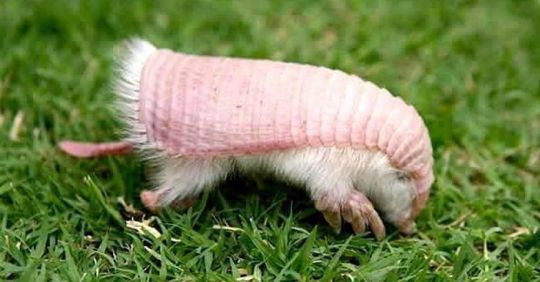
2) Orchid Mantis! ♡
This would such a cute exhibit animal! They are found in tropical forests of South East Asia. They are just such a beautiful insect!

3) Pallas Cat! ♡
They are so fluffy I absolutely love them so much, one of my favourite felines! They live across Russia and many counties in Asia up to altitudes of 5,600m! They have so much fur! They use their tail to help keep them warm! It's so cute!
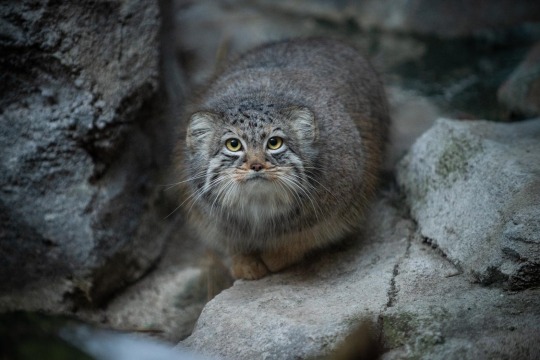
4) Chinchilla! ♡
I love Chinchillas so much! I have owned them and currently have one and they are such amazing little rodents! They are all so unique and have incredible personalities and are naturally very emotion driven animals! In the wild they mainly live In Bolivia, Peru, and Chile. They live on the rocky mountains at elevations between 9 and 15 thousand feet. I really wish these were added to the Arid pack!
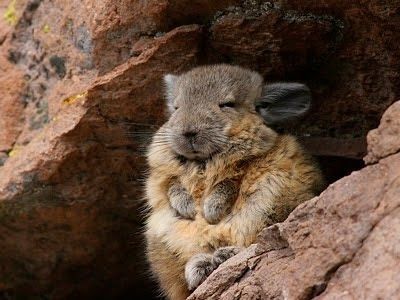
5) Rock Hopper Penguin! ♡
I love these guys! They are so silly! They are one of the smallest penguins. They can be found in Antarctica, Chile and New Zealand. Their beaks start off black but go orange as they age! That would be so cool to see in game!

6) Saola! ♡
These animals are only found in the Annamite Mountains of Laos and Vietnam and are critically endangered. Their horns can reach up to 20 Inches.

7) Satanic Leaf-Tailed Gecko! ♡
I love animals like these are are so cool! These geckos are indigenous to the island of Madagascar! They are solitary arboreal creatures.

8) Leopard Seal! ♡
They are one of the largest seals in the world! They live In the Antarctic and they have an incredibly diverse diet. They have a very impressive bite force.

9) Asiatic Lion! ♡
These cats are just gorgeous! There are only several hundred Asiatic lions in the wild and they only live in the Gir Forest in India. They are smaller than African lions and their manes are darker.

10) Serval!
I love wild cats if you could not tell! They live In Southern Africa. They have really long legs and large ears. They can leap up to 3.6 meters!
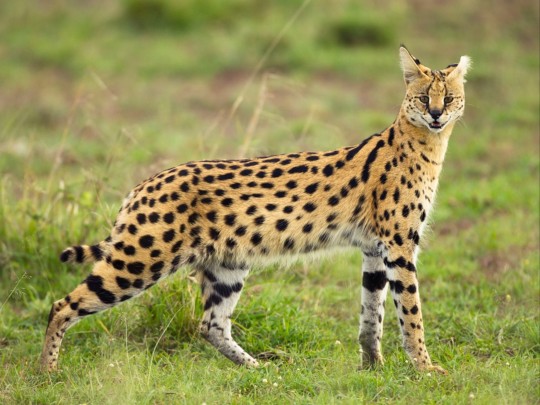
18 notes
·
View notes
Text
How to Write a Fantasy Novel Based in East Asia

Introduction
Imagine a world where dragons soar through the skies, where warriors wield swords with deadly precision, and where magic flows through the veins of the land. This is the world of East Asian fantasy, where ancient myths and legends come to life in vibrant and colorful ways. If you're a writer looking to create your own unique story set in this rich and fascinating world, then look no further. In this guide, I'll help you explore everything you need to know to write a fantasy novel based in East Asia.
Before we begin, it's important to acknowledge the vast cultural diversity of East Asia. This region includes countries such as China, Japan, Korea, and Vietnam, each with their own unique histories, traditions, and mythologies. While it's impossible to cover every aspect of this diverse region in one guide, I'll do my best to provide a broad overview of some of the key themes and elements you might want to consider when writing your own East Asian-inspired fantasy.
So, let's dive in!
Section 1: Setting the Scene
The first step in creating a compelling East Asian-inspired fantasy is to build a rich and immersive world for your characters to inhabit. This means taking the time to research and understand the historical and cultural context of the region you're drawing inspiration from, as well as incorporating elements of mythology and folklore.
For example, if you're writing a story set in ancient China, you might want to consider incorporating elements of Taoist philosophy or exploring the legend of the Monkey King. If you're setting your story in feudal Japan, you might draw inspiration from the samurai code of bushido or the tales of the legendary ninja clans. Whatever your chosen setting, be sure to immerse yourself in the history and culture of the region to create a world that feels authentic and engaging.
Once you've established the cultural context of your story, you can start to think about the physical world your characters will inhabit. This might include creating detailed maps of your fictional world, inventing unique flora and fauna, or describing the architecture and landscapes of your chosen setting. Don't be afraid to get creative here – by incorporating fantastical elements like floating temples, enchanted forests, or spirit realms, you can bring your world to life in exciting and unexpected ways.
Section 2: Crafting Your Characters
As with any story, the characters you create are the heart and soul of your East Asian-inspired fantasy. To create compelling and believable characters, it's important to draw on the cultural and historical context of your chosen setting, as well as incorporating elements of mythology and folklore.
For example, if you're writing a story set in feudal Japan, you might create a samurai character who embodies the values of bushido, such as honor, loyalty, and courage. Or, if you're setting your story in ancient China, you might create a character who is skilled in martial arts and draws on the principles of Taoist philosophy to guide their actions.
When crafting your characters, it's also important to consider their relationships with each other. In East Asian cultures, family, community, and hierarchy are often highly valued, so you might incorporate these themes into your story by exploring the dynamics between your characters. For example, you might create a protagonist who must navigate the complex social hierarchy of a samurai clan, or a group of travelers who must learn to work together to overcome a common enemy.
Section 3: Incorporating Magic and Mythology
One of the most exciting aspects of writing an East Asian-inspired fantasy is the opportunity to draw on the rich mythology and folklore of the region. This might include incorporating ancient gods and goddesses, magical creatures like dragons or kitsune, or exploring the concept of qi or ki energy.
When incorporating magic into your story, it's important to establish clear rules and limitations for your characters. This might mean defining the sources of magical power in your world, such as through meditation or the use of enchanted objects, or setting limits on the types of spells or abilities your characters can use.
Finally, remember that mythology and magic are often deeply intertwined in East Asian cultures. By exploring the myths and legends of the region, you can add depth and richness to your story, while also drawing on powerful archetypes and symbols that resonate with readers.
Disclaimer
I wanted to make sure to note, that it's heavily important to research the culture your inspired by. Many experts will be offended by misinterpreted cultural or even religious aspects that are misused. Especially if it's an individual born in the region your inspired by. So please be educated especially if for example if you're writing a chinese-inspired fantasy novel, and you're not chinese. It's heavily recommended to research cultural-appropriation, the history of the culture. the stereotypes and racism East-Asians go through on a daily basis. Thank you. - Ren T.
Conclusion
Writing a fantasy novel based in East Asia can be a daunting task, but by drawing on the rich history, culture, and mythology of the region, you can create a world that is both engaging and authentic. By setting the scene, crafting compelling characters, and incorporating magic and mythology, you can bring your story to life in exciting and unexpected ways. So, don't be afraid to dive in and explore this fascinating world, and let your imagination run wild!
Copyright © 2023 by Ren T.
TheWriteAdviceForWriters 2023
#writeblr#writerscommunity#writing#writing advice#writersnetwork#writersociety#writing inspiration#writers of tumblr#writing tips#aspiring author#thecompletenovelcoach#novelcoach#bookcommunity#book coach#writing class#writing community#writing coach#writing courses#authors on tumblr#authors#new writers on tumblr#writersofinstagram#female writers#writers on tumblr#writingcoach#fiction#women writers#writerscorner#creative writing#writers block
18 notes
·
View notes